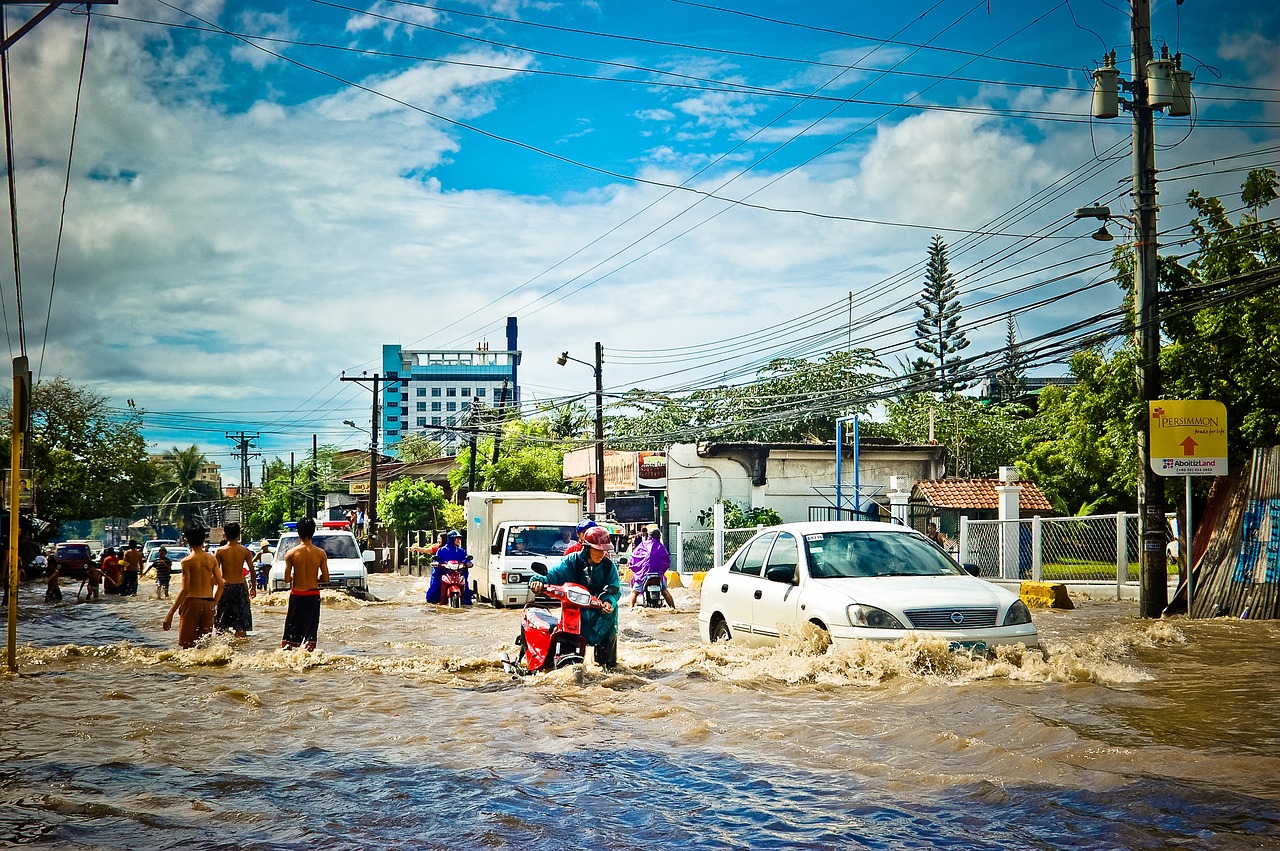KUALA LUMPUR, Oct 6 – Weather-related disasters caused 43.1 million internal displacements of children in 44 countries between 2016 and 2021 — or approximately 20,000 child displacements a day — according to a new UNICEF analysis released today.
Children Displaced in a Changing Climate is the first global analysis of the number of children driven from their homes between 2016 and 2021 due to floods, storms, droughts and wildfires, and looks at projections for the next 30 years.
While Malaysia is not included in the global report, displacement due to floods is a real and present danger. The Internal Displacement Monitoring Centre (IDMC) revealed that there were 354,000 climate-related internal displacements between 2016 and 2021 in Malaysia.
In 2021, floods triggered around 129,000 internal displacements in Malaysia compared with 24,000 in 2020. In 2022, the Internal Displacement Monitoring Centre (IDMC) recorded 156,000 people displaced due to floods, landslides, and storms: signs of a changing climate.
During storms and floods children are at higher risk of getting hurt or losing their lives. When climate disasters force families to leave their home, access to safe water and sanitation is often disrupted. And as the climate warms up, diseases like dengue and malaria spread faster.
A Child Rights Crisis
“Climate change is a child rights issue. It robs an entire generation of their future. Children and youth understand that disasters and climate change will significantly affect their lives. They are not mere beneficiaries of climate action,” said Robert Gass, UNICEF Representative to Malaysia. “With the right tools, resources, and support, they can act, advocate, and safeguard their friends, families, and communities from environmental harm”.
According to the report, floods and storms accounted for 40.9 million – or 95 per cent – of recorded child displacements between 2016 and 2021, due in part to better reporting and more pre-emptive evacuations.
Meanwhile, droughts triggered more than 1.3 million internal displacements of children, while wildfires triggered 810,000 child displacements, with more than a third occurring in 2020 alone.
China and the Philippines are among the countries that recorded the highest absolute numbers of child displacements, due to their exposure to extreme weather, large child populations and progress made on early warning and evacuation capacities. However, relative to the size of the child population, children living in small island states, such as Dominica and Vanuatu, were most affected by storms, while children in Somalia and South Sudan were most affected by floods.
Climate Driven Movement
“It is terrifying for any child when a ferocious wildfire, storm or flood barrels into their community,” said UNICEF executive director Catherine Russell. “For those who are forced to flee, the fear and impact can be especially devastating, with worry of whether they will return home, resume school, or be forced to move again.
“Moving may have saved their lives, but it’s also very disruptive. As the impacts of climate change escalate, so too will climate-driven movement. We have the tools and knowledge to respond to this escalating challenge for children, but we are acting far too slowly. We need to strengthen efforts to prepare communities, protect children at risk of displacement, and support those already uprooted.”
Using a disaster displacement risk model developed by IDMC, the report projects riverine floods have the potential to displace almost 96 million children over the next 30 years, based on current climate data, while cyclonic winds and storm surges have the potential to displace 10.3 million and 7.2 million children respectively, over the same period.
With more frequent and more severe weather events as a consequence of changing climate, the actual numbers will almost certainly be higher.
Decisions to move can be forced and abrupt in the face of disaster, or as the result of preemptive evacuation, where lives may be saved but many children still face the dangers and challenges that come with being uprooted from their homes, often for extended periods.
Here in Malaysia, climate scientists have predicted that by 2030, about a quarter of the population will be displaced because of climate change.
Actions To Protect Children
In Malaysia and around the world, UNICEF works with governments to better prepare for and minimise the risk of displacement, develop and implement child-responsive disaster risk reduction climate change adaptation strategies, and design resilient and portable services to protect and reach children before, during and after disaster strikes, catering solutions to address context-specific vulnerabilities.
UNICEF Malaysia has just wrapped up the Science and Technology for Disaster Risk Reduction and Resilience (STDR3) Week in Kundasang, Sabah, to promote disaster preparedness education for children and to empower local champions within the community.
As leaders prepare to meet at the COP28 Climate Change Summit in Dubai in November, UNICEF urges governments, donors, development partners, and the private sector to take the following actions to protect children and young people at risk of future displacement and prepare them and their communities:
- Protect children and young people from the impacts of climate change-exacerbated disasters and displacement by ensuring that child-critical services including education, health, nutrition, social protection and child protection services are shock-responsive, portable and inclusive, including for those already uprooted from their homes.
- Prepare children and young people to live in a climate-changed world by improving their adaptive capacity and resilience, and enabling their participation in finding inclusive solutions.
- Prioritise children and young people including those already uprooted from their homes in disaster and climate action and finance, humanitarian and development policy, and investments to prepare for a future already happening.












